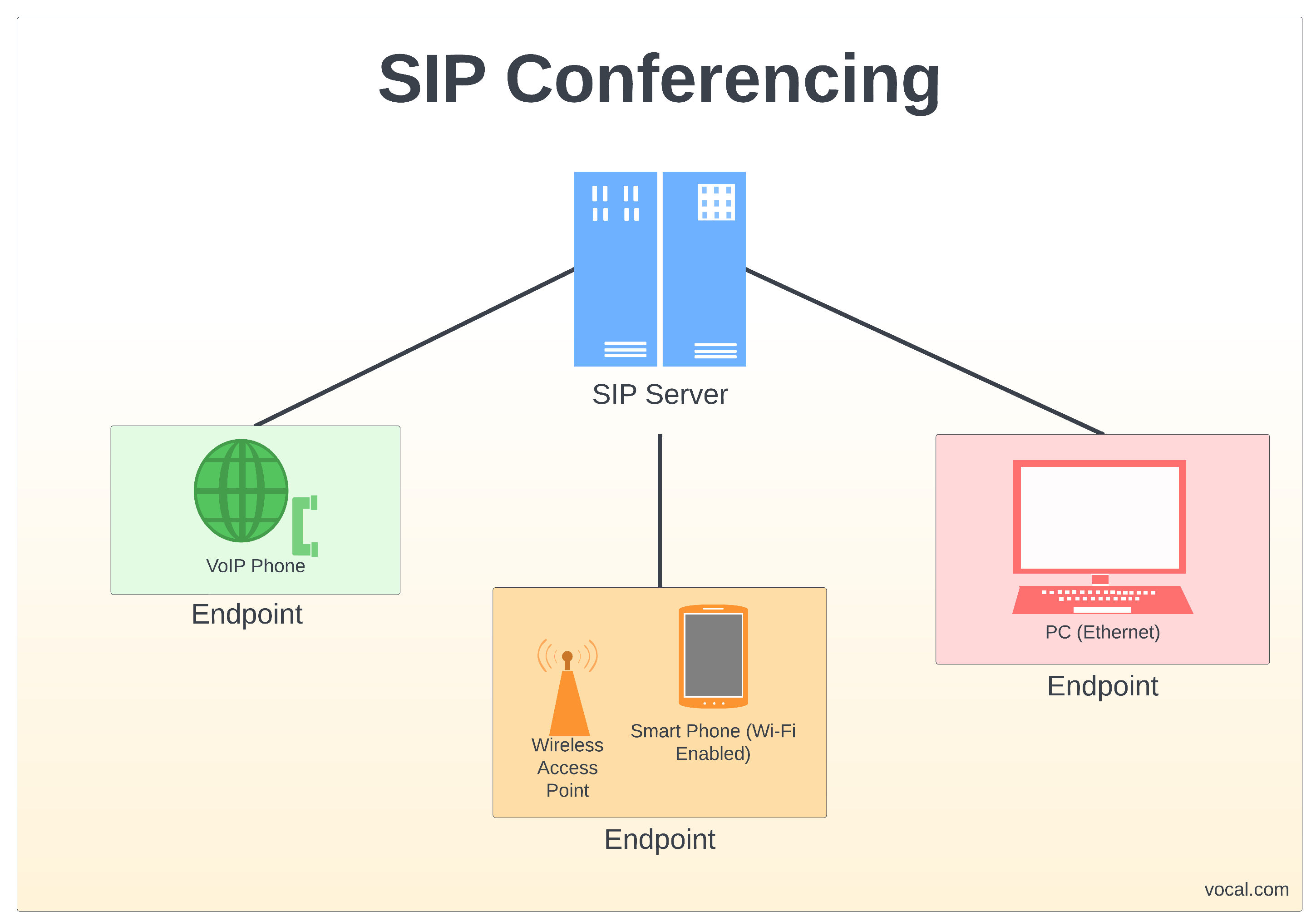SIP Conferencing is used with VoIP and Voice and Video over IP (VVoIP or V2oIP) to establish a conference session with multiple users. The core SIP specification provides a way to set up and manage sessions between two user agents. It is possible to create and control a multi-party conference using this specification. However in such a scenario, referred to as the loosely coupled conference model, there does not exist a relationship between every participant in the conference. Such conference situations can be accomplished by using multicast.
Alternatively, a UA can maintain multiple dialogs with multiple UAs while also acting as a media mixer. While the UA that is acting as the conference controller/mixer has knowledge of the other UAs involved in the conference, the other UAs do not know about each other. Additionally this scenario requires extra resources by forcing the controlling UA to do both.
SIP Conferencing Framework
RFC 4353 “A Framework for Conferencing with SIP” introduces a structure by which a central entity, called a focus, provides a variety of conference functions and mixing of media. In this type of conference, referred to as the tightly coupled conference model, each UA involved in the conference connects to the focus and maintains its own SIP dialog with it.
SIP Conferencing Policy
This specification also defines a logical function called a conference policy server that stores conference policy, which is simply a set of rules governing a particular conference. The focus must be able to access this conference policy to determine how the conference should operate, such as if a particular UA is allowed to join the conference. The specification also defines a second logical function called a conference notification service. This is a service that a conference participant can subscribe to and receive notifications when changes in conference state occur.
SIP Notifications and Alerts
In this model, a UA participating in a conference can SUBSCRIBE to the conference URI and be alerted via SIP NOTIFY messages when the state of the conference changes, such as when participants enter and leave the conference. Often the conference focus, policy server, and notification service are located in the same physical entity. RFC 4575 “A SIP Event Package for Conference State” defines an event package for notifying participants of a tightly coupled conferences of the conference state. RFC 4579 “SIP Call Control – Conferencing for User Agents” uses the concepts from RFC 4353 and RFC 4575 to define a set of recommended practices for creating and controlling a conference.
SIP Software
VOCAL’s embedded libraries include a complete range of ETSI / ITU / IEEE compliant algorithms, in addition to many other standard and proprietary algorithms. Our SIP source code is optimized for execution on ANSI C and leading DSP architectures from TI, ADI, AMD, Intel, ARM, MIPS, and other vendors. The SIP software libraries are modular and can be executed as a single task under a variety of operating systems or standalone with its own microkernel.
More Information
- VoIP Software
- Voip Design
- Speech Processing & Audio
- WebRTC
- RFC 3261 Standard
- SIP Analog Modem Server (SAMS)
- The Transport Layer Security (TLS) Protocol Version 1.3
- SIP Software Modules
- SIP Message Routing
- SIP Presence and Instant Messaging
- SIP Registration
- SIP User Authentication
- Secure SIP
- Session Initiation Protocol (SIP) and Deep Packet Inspection (DPI)
- SIP Trunking
VOCAL Technologies has been in business for over 30 years and is an engineering design house that can provide a custom solution that meets your unique communication requirements.
Please contact us to discuss your communication application requirements.
